Related Research Articles

The 1914 Arizona gubernatorial election took place on November 3,1914,for the post of the Governor of Arizona. The Supreme Court of Arizona ruled that there would be no statewide elections in 1912,thus extending the terms to sync up with elections on even years. The Democratic nominee was incumbent governor George W. P. Hunt,his Republican opponent was the final Delegate to Congress from Arizona Territory,Ralph H. Cameron. Cameron was disadvantaged by the same reason the previous Republican nominee Wells was:he had opposed statehood with the present Constitution.

The 1918 Arizona gubernatorial election took place on November 5,1918,for the post of the Governor of Arizona. Thomas Campbell,who served a partial term in 1917 and had his election overturned by the Supreme Court of Arizona,returned to contest the Governors office. Incumbent Governor Hunt declined to run again after the stress of the close elections and the year-long court battle. Despite falling to its lowest percentage in years,the sole third party challenger held the difference between the two candidates. The Democratic challenger was state senator Fred T. Colter,a pro-Hunt Democrat.
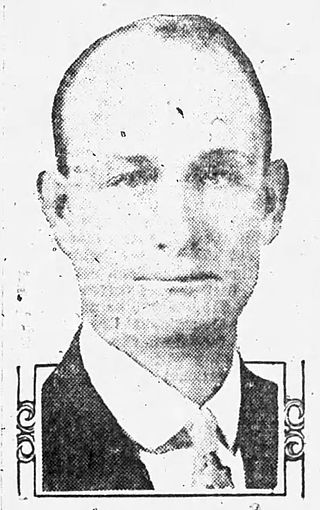
Fred Tuttle Colter was an Arizona rancher and farmer,as well as being the state senator for Apache County beginning with Arizona's second state legislature in 1915. Colter spent six terms in the Arizona Senate. He also led the fight on Arizona's behalf to maintain control over the water from the Colorado River,coining the slogan,"Save the Colorado for Arizona". He was a close ally of the state's first governor,George W. P. Hunt. Prior to his election to the state senate,Colter had served as the state's fair commissioner.

Fred Arthur Sutter Sr. was an Arizona attorney and politician. He ran several times,unsuccessfully,for governor of the state,and was elected several times to the state legislature.
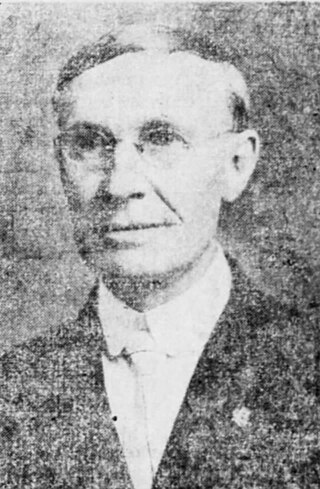
W.P. Sims was a politician and dentist from Arizona. He served in Arizona State Senate in the 1st,2nd,and 5th - 7th State Legislatures. He served as the President of the Senate during the 2nd Legislature.

Charles M. Roberts was an American politician who served in the first Arizona State Senate.
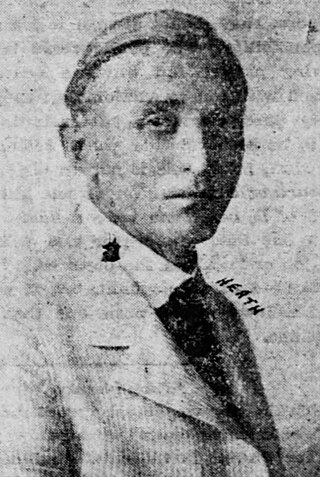
H. A. Davis (1879-1946) was an American politician from Arizona,who served as a senator in the 1st Arizona State Legislature. He was also a newspaperman and owned a printing business.
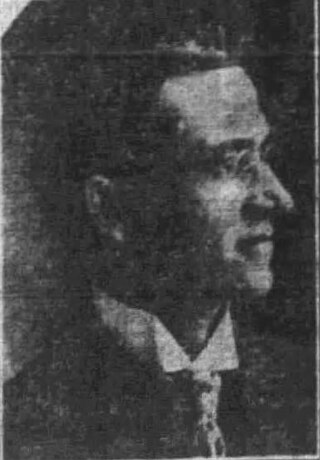
John T. Hughes was a politician from Arizona who served in the 1st Arizona State Legislature. He was also a newspaper man,editing and publishing his father's paper,the Arizona Daily Star,and an attorney,the first native-born Arizonan to be admitted to the Arizona bar. Additionally,he had several mining and real estate interests.

Homer R. Wood was a politician from Arizona who served in the 1st Arizona State Legislature.
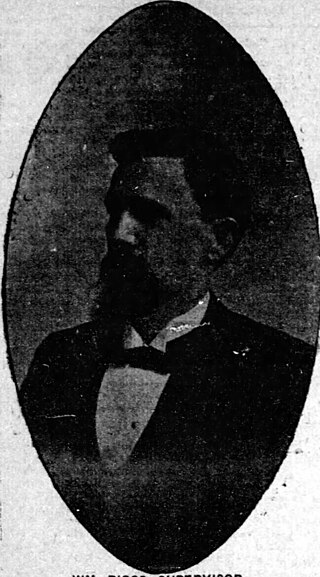
William Monroe Riggs was a politician from Arizona who served in the Arizona state senate during the 2nd Arizona State Legislature. He was a cattleman in southern Arizona,and served on the Cochise County board of supervisors for several terms,being chairman for four years,and was elected to the Arizona state senate.
William D. Claypool was an Arizona politician who served several terms in the Arizona State Senate during the 1910s and 1920s.

Henry Bannister Wilkinson was an American lawyer and politician who served three consecutive terms in the Arizona State Senate from 1918 to 1922,serving as the President of the Senate in his third term,during the 5th Arizona State Legislature. He unsuccessfully ran for several other offices,including in 1933,when Wilkinson lost in the first special election held in Arizona,for Arizona's sole congressional seat. He lost in a landslide to Democrat Isabella Greenway,who garnered 73% of the vote to become the first woman from Arizona to go to Congress. He was instrumental in bringing main line railroad service to Phoenix,Arizona;was one of the founders of what is known today as Banner - University Medical Center Phoenix;was a member of the Arizona State Bar for over fifty years,serving as its president one year;and was very active in the movement to improve the roads in Arizona.

William P. Mahoney was an American lawyer and politician who served in the Arizona House of Representatives from 1915 to 1916 and in the Arizona Senate from 1917 to 1918,as a member of the Democratic Party. After his tenure in the state legislature he served as the sheriff of Mohave County,Arizona.
Thomas A. Hughes was an American politician and businessman from Arizona. He served a single term in the Arizona State House of Representatives during the 3rd Arizona State Legislature,and a single term in the Arizona State Senate during the 4th Arizona State Legislature. He owned an insurance agency in Bisbee,Arizona,and later served as an officer of the Hartford Indemnity and Insurance Company.
David C. O'Neil was an American politician from Arizona. He served a single term in the Arizona State House of Representatives during the 3rd Arizona State Legislature,and a single term in the Arizona State Senate during the 4th Arizona State Legislature. He served 13 years on the Arizona State Tax Commission,6 of them as chairman. He was appointed in 1934 to serve the last year of an unexpired term,then was re-elected twice,in 1934 and 1940. Early in his career he worked in the hospitality and transportation industries.
Harold A. Elliott was an American lawyer and politician from Arizona. He served several terms in the Arizona State Senate from the 4th Arizona State Legislature through the 7th Arizona State Legislature. He graduated from the University of Michigan Law School,and became an attorney,eventually becoming Phelps Dodge's chief counsel.

Charles C. Green was an American rancher and politician from Arizona. He served a single term in the Arizona House of Representatives during the 3rd Arizona State Legislature,followed by a single term in the Arizona State Senate during the 4th Arizona State Legislature.

Anthony A. Johns was an American politician from Arizona. He served a single term in the Arizona State Senate during the 4th Arizona State Legislature,holding one of the two seats from Yavapai County,as well as serving as President of the Senate. He also held one of the seats from Yavapai County in the Arizona House of Representatives three times,in the 2nd,3rd and 13th Arizona State Legislatures,serving as the Speaker of the House during the 3rd Legislature. He was a long-time resident of Prescott,and one of the largest sheepherders in Yavapai County. Other business interests included mining and construction. Other offices held included a regent for the University of Arizona,chairman of the Arizona Highway Commission,chief of the Prescott Fire Department,president of the Arizona Wool Growers Association,and vice-president of the National Wool Growers Association.
David Morgan was an American politician from Arizona. He served a single term in the Arizona State Senate during the 5th Arizona State Legislature,holding one of the two seats from Yavapai County.
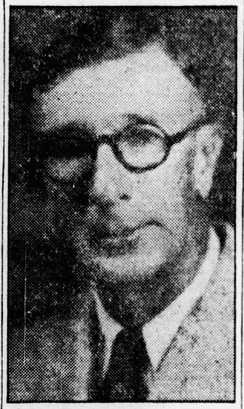
W. B. Kelly,was an American politician from Arizona. He served three terms in the Arizona State Senate during the 10th,11th,and 12th Arizona State Legislatures,holding the seat from Graham County. He was a pioneer newspaper man in Arizona,owning and editing several newspapers,including the Arizona Daily Star,Bisbee Daily Review,and the Graham Guardian.
References
- ↑ "History of the Arizona State Legislature 1912-1966". State of Arizona. p. 81. Retrieved March 3, 2022.
- ↑ "First National Officers". Bisbee Daily Review . January 10, 1906. p. 4. Retrieved August 14, 2022– via Newspapers.com.
- ↑ "The First National Bank of Bisbee". Bisbee Daily Review . January 24, 1908. p. 3. Retrieved August 14, 2022– via Newspapers.com.
- ↑ "Untitled". Bisbee Daily Review . August 27, 1910. p. 7. Retrieved August 14, 2022– via Newspapers.com.
- ↑ "Untitled". Bisbee Daily Review . August 25, 1915. p. 1. Retrieved August 14, 2022– via Newspapers.com.
- ↑ "Rock And Roberts Still Contesting The Nomination". Bisbee Daily Review . September 13, 1918. p. 2. Retrieved August 14, 2022– via Newspapers.com.
- ↑ "Official Totals Of Primary Election". Tombstone Weekly Epitaph . September 29, 1918. p. 2. Retrieved August 14, 2022– via Newspapers.com.
- ↑ "On Business Trip". Bisbee Daily Review . December 8, 1918. p. 8. Retrieved August 14, 2022– via Newspapers.com.
- ↑ "Political Complexion of Next State Legislature Decided by Last Election". The Arizona Republican . November 14, 1918. p. 3. Retrieved August 14, 2022– via Newspapers.com.
- ↑ "Douglas Man Weds". Bisbee Daily Review . June 6, 1919. p. 8. Retrieved August 14, 2022– via Newspapers.com.
- ↑ "State Primary Today Will Show Hot Local Contests For Sheriff and Attorney". Bisbee Daily Review . September 7, 1920. p. 1. Retrieved August 14, 2022– via Newspapers.com.
- ↑ "County Supervisors Canvass Primary Election Ballots; Ignore Vote of One Precinct". Bisbee Daily Review . September 15, 1920. p. 6. Retrieved August 14, 2022– via Newspapers.com.
- ↑ "Cochise Co. Returns". Bisbee Daily Review . November 5, 1920. p. 4. Retrieved August 14, 2022– via Newspapers.com.
- ↑ "For State Senate". Bisbee Daily Review . August 7, 1922. p. 7. Retrieved August 14, 2022– via Newspapers.com.
- ↑ "Candidates Rush To County Seat To File Papers". Bisbee Daily Review . August 13, 1922. p. 2. Retrieved August 14, 2022– via Newspapers.com.
- ↑ "Candidates Rush To County Seat To File Papers". Bisbee Daily Review . August 13, 1922. p. 2. Retrieved August 14, 2022– via Newspapers.com.

- ↑ "Democratic State and County Candidates". Tombstone Epitaph . October 1, 1922. p. 2. Retrieved August 14, 2022– via Newspapers.com.

- ↑ "Bought Registered Bulls For Cochise County Ranges". Tombstone Weekly Epitaph . October 15, 1922. p. 3. Retrieved August 14, 2022– via Newspapers.com.

- 1 2 "Palm Acres Suburban Homesite Division Will Be Formally Opened This Morning". The Arizona Republican . February 26, 1928. p. 12. Retrieved August 14, 2022– via Newspapers.com.

- ↑ "California Firm Buys Douglas Herd Output". Arizona Republic . September 24, 1933. p. 13. Retrieved August 14, 2022– via Newspapers.com.

- ↑ "Ex-Senator Buys Moore Stock Ranch". Arizona Daily Star . June 16, 1930. p. 9. Retrieved August 14, 2022– via Newspapers.com.

- ↑ "Palm Acres Is Subdivision To Go On Market". The Arizona Republican . February 12, 1928. p. 17. Retrieved August 14, 2022– via Newspapers.com.

- ↑ "Lower House Increased By Nine Solons". The Arizona Republican . November 2, 1930. p. 2. Retrieved August 14, 2022– via Newspapers.com.

- ↑ "Democrats Win Both Houses In Arizona Overwhelmingly". Tucson Citizen . November 6, 1930. p. 8. Retrieved August 14, 2022– via Newspapers.com.

- ↑ "Untitled". Tucson Citizen . June 17, 1932. p. 10. Retrieved August 14, 2022– via Newspapers.com.

- ↑ "Majority of Legislators Meet Defeat". Arizona Daily Star . September 16, 1932. p. 1. Retrieved August 14, 2022– via Newspapers.com.

- ↑ "Boards Elect Douglas Man". Arizona Daily Star . March 17, 1936. p. 3. Retrieved August 14, 2022– via Newspapers.com.

- 1 2 "Pair Appointed By Stanford To Live Stock Sanitary Board". Arizona Republic . August 15, 1937. p. 2. Retrieved August 14, 2022– via Newspapers.com.

- ↑ "Livestock Board To Remain As Is". Arizona Republic . July 30, 1937. p. 12. Retrieved August 14, 2022– via Newspapers.com.

- ↑ "Ouster Case To Be Heard". Arizona Republic . September 21, 1937. p. 10. Retrieved August 14, 2022– via Newspapers.com.

- ↑ "John P. Cull Fights Ouster". Arizona Republic . October 26, 1937. p. 5. Retrieved August 14, 2022– via Newspapers.com.

- ↑ "High Court Settles Question Argued In State Many Years". Arizona Republic . February 10, 1938. p. 10. Retrieved August 14, 2022– via Newspapers.com.

- ↑ "Senate Reverses Self On College Measure". Arizona Republic . January 27, 1939. p. 3. Retrieved August 14, 2022– via Newspapers.com.

- ↑ "John P. Cull Resigns Post As Cattle Board's Chief". Arizona Republic . March 19, 1939. p. 6. Retrieved August 14, 2022– via Newspapers.com.

- ↑ "Joe Hunt To Replace Hull On Livestock Sanitary Board". Arizona Republic . April 25, 1939. p. 5. Retrieved August 14, 2022– via Newspapers.com.

- ↑ "The Bank of Douglas". Arizona Republic . January 5, 1946. p. 7. Retrieved August 15, 2022– via Newspapers.com.

- ↑ "New Bank Will Open In Phoenix Tomorrow". Arizona Republic . April 1, 1945. p. 7. Retrieved August 15, 2022– via Newspapers.com.

- ↑ "Ex-State Senator's Rites Are Set". Arizona Daily Star . January 28, 1955. p. 6. Retrieved August 13, 2022– via Newspapers.com.